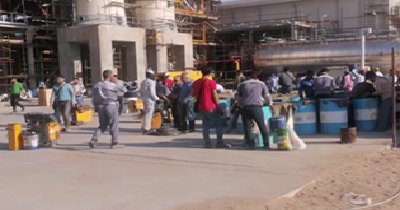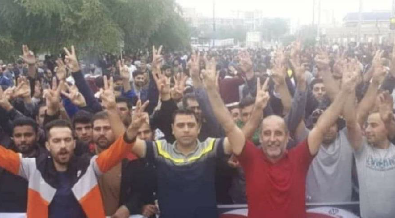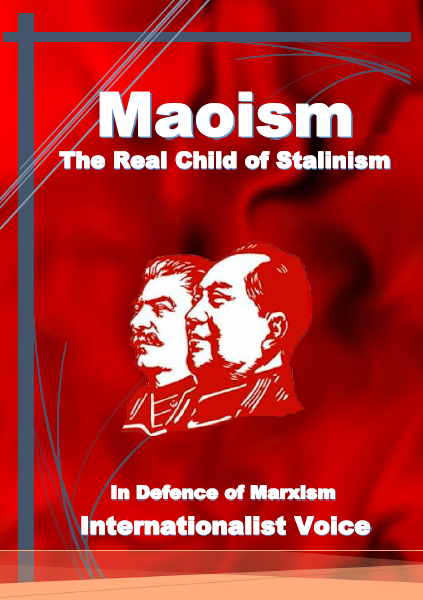Workers’ protests and spreading illusions to the bourgeois judiciary – Long live the independent workers’ struggle!
The Iranian working class is living in some of the most difficult economic and social conditions. Peripheral capitalism, in crisis, with its ugly face, has created an earthly hell for wage slaves and the lower strata of society. The corona pandemic has made economic and social conditions more inhumane than before. Millions of workers are unemployed, and hundreds of thousands of workers are joining the huge army of the unemployed. Wage levels are much lower than the poverty line. The working class and the lower strata of society are struggling for survival. Despite these difficult conditions and the persistence of the corona pandemic, we are witnessing workers’ protests and strikes at all points in Iran – strikes and protests by railway workers, nurses, the workers of the Haft Tappeh Sugarcane Agro-Industry (Haft Tappeh), municipality workers and especially the workers of the Kerman Coal Mining Company, to name but a few.
Although the protests of municipal workers were scattered and unrelated, the strike spread to at least 17 cities. They had common demands: job security, payment of wage arrears, wage increases for earnings below the poverty line, improved working conditions and reduced working hours. In Ahvaz Municipality, the workers’ strike was considered suspicious, and it was disrupted; they were replaced by other workers, and a special unit was called in to suppress the workers. The special unit fired directly at the protesting workers, injuring two of them. The deputy mayor called for the security forces to take follow-up action and prosecute the workers. A number of workers were also threatened with arrest.
In late May 2020, 3,500 workers at the Kerman Coal Mining Company went on strike to protest about job insecurity, low wages and other benefits. They dragged the protest into the city. Workers chanted, “We will fight. We will fight. We will not accept humiliation.” The city resonated with the workers’ protest. One of the strengths of this particular protest was the significant presence of working families, which even appeared in the form of speakers, and this played an important role in reflecting this protest. Family solidarity and taking protests into the city to gain support give workers more power to protest.
The Islamic bourgeoisie is aware of the potential of the working class and the social protests of the post-corona era, so in addition to unbridled repression of workers’ protests and their shelling, the bourgeoisie has also taken action to prevent workers from becoming radicalized, from protesting against the state and pursuing legal channels. In this regard, the dirty Islamic bourgeoisie has recently started a new show, and unfortunately, some people (so-called labour activists) are seeking to create illusions for the Islamic bourgeoisie. Omid Asad Beigi and Mehrdad Rostami Changi, two young owners of the Haft Tappeh Company, along with 21 government officials, bank, administrative and other officials, will be tried for embezzling one and a half billion dollars. The state-run media, especially those close to the fundamentalists, are spreading propaganda about the trials and are talking about justice. With these performances and shows, the Islamic bourgeoisie is pursuing certain goals. First of all, these trials reflect the internal conflicts of the bourgeois tendencies, the fundamentalist faction, in the power struggle, which puts pressure on the reformist faction. Secondly, the Islamic bourgeoisie seeks legitimacy for the judiciary and its butchery, like Raisi, who wants to pretend that it is fair and that anyone who violates any position must answer. Thirdly, with such a gesture, the Islamic bourgeoisie wants to direct the workers’ protests towards the legal channel (government channel) in order to empty the protests of their content by negating the hidden anger of the workers in the state channel.
One of the figures mentioned in the court hearings is Gholamreza Shariati, the religious and faithful director of the governor of Khuzestan. Asad Beigi (the owner of Haft Tappeh) has not only paid for a luxury and leisure tour for the governor’s family but has also paid $200,000 in bribes to the governor’s wife. All of this happened at a time when Haft Tappeh workers were protesting about unpaid salaries or were in prison for such protests. Although court hearings are non-public, some fundamentalist media outlets have published excerpts from court hearings, including the following:
“Omid Asad Beigi paid $20,000 for one of the governor’s and his family’s trips to the governor’s wife, and also paid $200,000 to the governor’s wife through an intermediary” [1]. [Our translation]
The same governor, along with the security agencies, has played an important role in suppressing and neutralizing workers’ struggles and divisiveness among workers. In particular, the workers of Haft Tappeh and the workers of the National Steel Industrial Group know him well and remember the role that this criminal has played in suppressing the labour movement. During the same court session, Omid Asad Beigi made the following declaration about the services provided by the governor of Khuzestan to employers:
“Shariati is an honourable and persistent man who has supported me and supported me well.” [2] [Our translation]
Following revelations in social media about Asad Beigi’s bribe to the governor of Khuzestan, the Tehran Public and Counter-Revolutionary Prosecutor’s Office defended the governor and announced in a statement that the broadcasting of the governor’s bribe was illegal; in other words, it intended to seek a prosecution and stated:
“Attribution of any charge or wrongdoing to persons can only be cited if it has gone through [the appropriate] stages and judicial process… The indictment against the governor of Khuzestan has not been filed in the Tehran Prosecutor’s Office, and accordingly, bringing charges against him is unjustified and without legal legitimacy” [3]. [Our translation]
The scenario of legitimizing the bourgeois judiciary continues, meanwhile, and municipal workers are being shot in the street for protesting. Recently, government newspapers announced that at the request of the butcher of political prisoners, executioner Raisi, the leader of the Islamic Bourgeoisie had agreed to pardon some Haft Tappeh workers and several detainees on Labour Day:
“At the request of the head of the judiciary, the Supreme Leader agreed to pardon a number of convicts, and among those granted a pardon or mitigation were a number of security convicts, including a number of students[;] some Haft Tappeh workers and several workers detained on Labour Day are on the list of forgiveness” [4]. [Our translation]
The exact list of those “pardoned” is not yet known, but Farzaneh Zilabi, a lawyer for Haft Tappeh workers, said that Ismail Bakhshi, Ali Nejati and Mohammad Khanifar are on the amnesty list. In other words, the fate of Sepideh Qalyan, Asal Mohammadi, Sanaz Al-Hayari, Amir Gholi and Amir Hossein Mohammadi Fard, who were released on bail, is still unknown. Forgiveness means that a person has committed a crime and his or her crime is forgiven for humanitarian reasons. Worker activists have not committed any crime so don not need to be forgiven. This is the butcher of political prisoners, the head executioner, who, along with the Supreme Leader, should be tried for crimes committed.
Unfortunately, some worker activists have actually served in the scenario of legitimizing the executioner (butcher of political prisoners in the 1980s). Recently, a letter bearing the signatures of 23 Haft Tappeh labour activists, three Hepco labour activists, along with those of a large number of Basijis and theology students (students who want to be mullahs), was sent to the criminal Raisi, who is the current head of the judiciary. The letter reads:
“The five-year hard work of Haft Tappeh workers and student organizations who were concerned about the Haft Tappeh agro-industry and have been trying to bring this great industry out of the hands of the looters of the Khuzestan industry has finally come to fruition, and the trial of Asad Beigi, the buyer and CEO of Haft Tappeh, is underway… We expect Your Excellency to immediately enter into this case and order a public trial with the free presence of journalists, student activists and hardworking workers so that public opinion can be informed about the behind-the-scenes of such privatizations. It is hoped that the judiciary will determine the case, far from being affected by any external pressures” [5]. [Our translation]
Raisi, the butcher of the 1980s (who has thousands of private plaintiffs and is responsible for shedding the blood of thousands who have fallen under his commandments), is the one who has been promoted to the head of the judiciary in the shadow of his crimes. Any correspondence with such an executioner is only in order to create an illusion of the criminal judiciary of the Islamic bourgeoisie; it is to throw dirt into the eyes of the workers. The Islamic bourgeoisie has repeatedly tried to prosecute country managers and officials for its own interests or for internal disputes and internal rivalries, and has even executed people in this regard. The trial and imprisonment of Rafsanjani’s children and Ahmadinejad’s relatives, and the execution of Qutbzadeh are just some of them. The trial of Asad Beigi is also just one of these trials. Asad Beigi’s trial judges are more vicious, more criminal and more thieving than Asad Beigi himself. In their struggle, the workers of Haft Tappeh must rely on their own strength and their working-class brothers and sisters in other sections, and they should be under no illusion about the fundamentalist faction of the bourgeoisie. The same illusion is promulgated on the Labour Committee’s Telegram channel, entitled “Haft Tappeh Syndicate”:
“After months of waiting and years of fair and conscious struggle by the brave workers of Haft Tappeh, Omid Asad Beigi, [accused] of rent-seeking and economic corruption, was brought to trial and revived this hope in the hearts of the workers of the sugarcane company, which, of course, the judiciary has done with justice and fairness, ending his five years of suffering, oppression and illicit profiteering, punishing him severely… The brave Haft Tappeh workers seeking justice must wait until the end of this trial for a decisive, fair and appropriate verdict by the judicial authorities [in respect of this great corruption]. Any expediency and exerting influence in the case will not be tolerated, and they claim this right because of the irreparable oppression of the corrupt Asad Beigi family, [because they must] dispossess the incompetent and inefficient employer who decreased production to twenty thousand tons. The workers should take… decisive action against these corrupt people and their indigenous and non-indigenous supporters” [6]. [Our translation]
All of this demagoguery comes at a time when a protesting worker, Rasool Talib Moghadam, has been sentenced to flogging by the same judiciary as punishment for protesting, in the name of “justice and fairness”. After being publicly tortured (74 lashes) and in poor physical condition, he was transferred to Evin Prison and put into quarantine. However, he has since been released. The same judiciary resorted to torture in the case of Bakhshi and Sepideh Qalyan, who recounted their “confessions” in a television show (A documentary titled Burned Design). This is also the same system that responded to the protest of a municipal worker in Ahvaz with bullets.
After 28 days of glorious struggle in the autumn of 2018, 28 days of class struggle, 28 days when society was shaken by the wage slaves, the glorious Haft Tappeh strike was defeated, but the achievements, teachings and even mistakes of the workers’ struggle will not be forgotten and have become part of working-class history. At one time, Haft Tappeh was a symbol of workers’ protest, not only in Khuzestan or Iran but also the world over. At one time, Haft Tappeh was the subject of discussion, not only in Khuzestan or Iran but also in most cities around the world. Meetings were once held in European and American cities focusing on the achievements of the Haft Tappeh labour struggle.
Haft Tappeh became a symbol of workers’ protest because the striking workers did not turn to the bourgeois institutions and organs in order to fulfil their demands, but rather they cut off the process of accumulating surplus value and capital gains. They actioned their demands through struggle. This shattered any illusions the workers had about the bourgeoisie and, consequently, strengthened the courage and fighting spirit of the workers. Working women were drawn from the margins to the centre of the struggle; families joined the struggle showing mass solidarity. During the struggle, labour leaders were formed, and the need for a strike committee, a factory committee and other forms of independent labour organizations was highlighted.
The post-corona era will be an era of protest movements. Without the involvement of the working class as a social class in social protests, only the dormant anger of social protests will be discharged, and social protests will not be able to rise to a higher level. Is the working class preparing for the post-corona era? Will the working class turn the devastation caused by the corona pandemic into an opportunity for the workers’ movement to move forward?
Towards independent workers’ organizations!
Long live the independent workers’ struggle!
M. Jahangiry
7 June 2020
Notes:
[1] https://www.radiofarda.com/a/Khuzestan-governor-Shahriati-reaction-bribe-Asadbeigi/30630590.html
[2] As source 1
[3] Tehran Prosecutor’s Office Announcement
[4] Islamic Bourgeoisie had agreed to pardon some workers
[5] Letter to Raisi
[6] https://t.me/s/syndica_7tape














